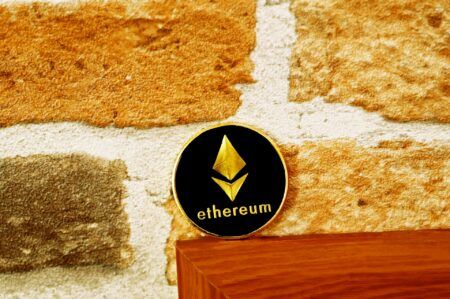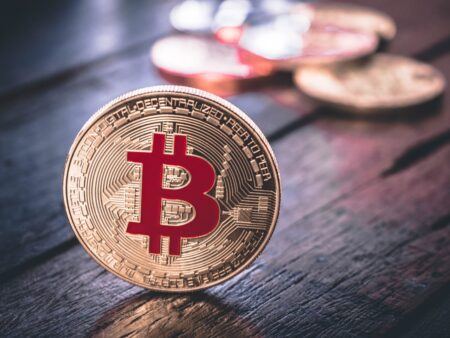At the recent Consensus 2018 conference in New York City, Alex Tapscott, who with his father Don Tapscott founded the Blockchain Research Institute last year and is also the co-writer of the book “Blockchain Revolution”, presented his taxonomy of cryptoassets. According to Alex and Don Tapscott, we should not consider all cryptoassets as being the same and that in fact they can be divided into seven different categories:
Cryptocurrencies
This is the one that everyone knows well, and the best example is Bitcoin (BTC). It was a designed as “cash for the internet”; you could use it to move value peer-to-peer in a trust-less manner. Other examples of cryptocurrencies include Bitcoin Cash (BCH), Litecoin (LTC), Monero (XMR), Dash (DASH), and Zcash (ZEC). Some of these, like the last three, are focused on privacy.
Platforms
These are essentially blockchain-based operating systems, and the best-known example is Ethereum (ETH). Alex points out that it is kind of ridiculous when people in the media say things like “Ethereum is the new Bitcoin” since they do very different things: Bitcoin was designed as a secure medium of exchange for the internet , whilst Ethereum is a general-purpose platform that lets you build decentralized applications (DApps) and smart contracts. There are currently over 1500 DApps that run on Ethereum.
Ethereum has also become the “proto investment bank” for the entire crypto industry. In 2017, there was around $6 billion of ICO activity happened, and around 50% of that occurred on the Ethereum network using ERC-20 tokens.
You can think of the Ethereum network as a city and the applications that run on it as cars that drive around the city. The ether token is the “gas” that allows these cars to run. Therefore, as more applications get built for Ethereum, the demand for ether will go up.
However, Ethereum is not the only blockchain platform. Since it came out, dozens of other platforms (also sometimes confusingly referred to as “protocols”) have emerged. Examples include AION, NEM, ICON, and Cosmos. These 2nd or 3rd generation blockchain platforms usually aim to achieve most/all of the following goals:
- Interoperable.
- Scalable.
- Smart Contract Capable.
- Customizable.
- Multi asset.
- Multi industry.
- Public (but with private functionality).
Currently, around a third of the value of the crypto market falls into the platforms category.
Utility Tokens
These are “native blockchain assets that operate within an application system.” The reason for calling these blockchains “utility tokens” is that their tokens have “utility” by virtue of usually being the only accepted form of payment for the service provided by the blockchain. Examples include:
- Golem (GNT), which is a market place for computing power, or in the words of the Golem team, the “AirBnB of computing”;
- Augur (REP), which is a prediction market, where you can bet on the outcome of future events; and
- SiaCoin (SC), which provides decentralized cloud-based data storage (think of it as a decentralized Dropbox) by connecting those individuals with surplus hard drive space with those individuals that need data storage space, and the only way to for this data storage service is using SC tokens;
Security Tokens
According to Alex, quite a few of the “utility tokens” launched last year were in fact security tokens since there was no legitimate use for token.
In the world of finance, a “security” is a tradable financial asset. In the United States, a security is a tradable financial asset of any kind. There are three types of securities: debt securities (banknotes, bonds); equity securities (common stocks); and derivatives (forwards, futures, options, and swaps).
There are six types of security tokens: debenture tokens; smart swap contracts; option tokens; equity tokens; bond tokens; and smart futures contracts.
This category will potentially will become the most important/valuable in the crypto space since the equities and derivatives markets are worth hundreds of trillion dollars, and even if only a small portion of those markets was put on the blockchain, we are easily talking about trillions of dollars in value.
Natural Asset Tokens
These are tokens that are backed by physical assets in the real world. These assets can come from either “established markets” (examples include gold, oil, natural gas, fuel oil, and base metals) or “frontier markets” (examples are carbon, water, and air).
One very interesting example is CarbonX, which has the laudable mission of fighting climate change using blockchain technology. This is essentially a loyalty reward program where consumers are rewarded for making environmentaly-friendly choices when purchasing products/services.
According to Fast Company, here is how it works: “CarbonX buys carbon offsets under a United Nations-backed scheme called REDD+. This certifies greenhouse gas reductions from forestry and ecosystem remediation projects around the world. CarbonX converts those credits into a cryptocurrency, in the form of a token called CxT. Then it sells on these tokens to retailers and manufacturers, who use them to incentivize consumers to make more sustainable choices.”
Some other examples of natural asset tokens are Digix (gold), Everledger (diamonds), and Sandcoin (sand).
Crypto-Collectibles
These are unique (i.e. not fungible) digital assets. As with natural asset tokens, they track provenance, but are not usually linked to something with real value. Perhaps, the best example of today’s crypto-collectibles is CryptoKitties. As for tomorrow’s crypto-collectibles, one good example is assets in virtual worlds.
Crypto-Fiat Currencies and Stablecoins
There are two types of price-stable crypto assets. Crypto-fiat currencies are government-issued currencies on the blockchain. The other way to achieve price stability is via stablecoins, which try to keep the price within a certain band either by pegging to an asset in the real world like gold or dollars — examples are Tether (USDT) and Circle's USD coin (USDC), or through a dynamic supply system, e.g. Basis.
The first and best example of a crypto-fiat currency is Venezuela’s Petro (PTR), which was launched in February 2018 as a way to circumvent U.S. government economic sanctions.
Featured Image Credit: “binary damage code” by “Markus Spiske” via Flickr; licensed under “CC0 1.0”









